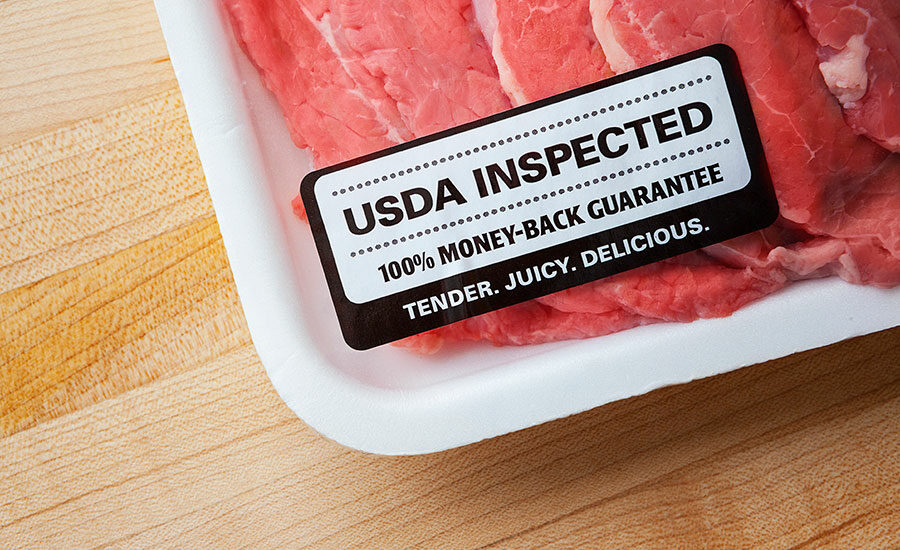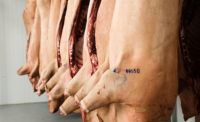On May 15, 1862, Abraham Lincoln signed into law an act of Congress establishing the United States Department of Agriculture, with a mission of promoting agriculture. Forty years later, when the public concern about food safety grew strong enough to support government intervention, the USDA was chosen to govern the industry.
Food quality management is complex and the overall economics of quality are often underestimated. The meat business is also one of the most regulated industries in the United States, second only to nuclear power.
During the early 1900s, four major meat-packing corporations — Armor, Wilson, Cudahy and Swift — bought out the many small slaughterhouse companies throughout the United States. Because they were so large, the meat-packing companies could dictate prices to cattle ranchers, feed growers and consumers. The meat-packing companies centralized their operations in a few cities including Omaha, Kansas City and Fort Worth, but the largest concentration of operations was in Chicago. It spread through acres of stockyards, feed lots, slaughterhouses and meat-processing plants.
When Upton Sinclair wrote “The Jungle,” published in 1906, to expose the appalling working conditions in the meat-packing industry, the White House was bombarded with mail, calling for reform. After reading Sinclair’s book, President Theodore Roosevelt appointed a special commission to investigate Chicago’s slaughterhouses. The commission’s report, issued in May 1906, confirmed the majority of the horrors Sinclair documented. The commissioners criticized existing meat-inspection laws that required only confirmation that the animals were healthy at the time of slaughter. The commissioners recommended inspections take place at every stage of meat processing, and that the secretary of agriculture make rules requiring the cleanliness and wholesomeness of animal products. Roosevelt declared laws were needed to enable federal inspectors to supervise the preparation of meat products.
President Roosevelt overcame meat-packer opposition and pushed through the Meat Inspection Act of 1906. The law authorized USDA inspectors to prevent any bad or mislabeled meat from entering interstate and foreign commerce. The meat-packers, however, won a provision in the law requiring the government rather than the companies to pay for the inspection.
Passage of the Meat Inspection Act opened the way for Congress to approve a long-blocked law to regulate the sale of most other foods and drugs. For more than 20 years, the Department of Agriculture had tested chemicals added to preserve foods and found many were dangerous to human health. Roosevelt signed a law regulating food and drugs on June 30, 1906, the same day he signed the Meat Inspection Act. The Pure Food and Drug Act regulated food additives and prohibited misleading labeling of food and drugs. This law led to the formation of the federal Food and Drug Administration (FDA). The two 1906 laws increased consumer confidence in the food and drugs they purchased. In 1940, the FDA was removed from food inspection, leaving the USDA with the power to regulate meat and poultry.
For years following the inception of the Meat Inspection Act, through sight, smell and touch the inspectors attempted to control contaminated and diseased products from entering into commerce. On July 20, 1969, Apollo 11 landed on the moon, and six hours later, Neil Armstrong became the first man to set foot on the moon. Yet, despite this technology in our space program, the USDA still used organoleptic inspection methods to inspect and govern our food supply.
The USDA’s Food Safety and Inspection Service tried to implement a variety of programs designed to prevent unsanitary food from entering the marketplace. In 1980, a cooperative food-safety program known as a Total Plant Quality Control System was launched. This system allowed plants to develop their own food-safety systems, which were then presented to the FSIS for approval. Upon approval, the agency allowed a plant to process and label certain products in the absence of an inspector. This program demonstrated that the USDA was willing to transfer some of the food-safety authority over to the industry.
In 1988, the USDA proposed and began testing what it called Streamlined Inspection System as an alternative to traditional meat inspection. In place at five locations, the system attempted to improve the procedures of FSIS. Technological improvements were prompting USDA officials to consider alternatives to the intensive program that required inspectors to thoroughly examine every carcass that entered the plant. Under the streamlined program, some of the duties performed by USDA representatives would be transferred to meat company employees, theoretically allowing government inspectors to concentrate on product safety problems such as microbiological hazards. The program was sharply criticized by a consumer-advocacy groups and after investigation through a congressional subcommittee, was terminated, despite government claims that the pilot plan was working better than anticipated.
In 1993, 623 people in the western U.S. fell ill after ingesting a then-little-known pathogen called E. coli O157:H7. Four children died from their infections and many others suffered long-term medical complications. The bug was later traced to undercooked hamburger served at Jack in the Box restaurants. The media coverage and scale of the outbreak were responsible for bringing the exotic-sounding bacterium out of the lab and into the public consciousness, but it was not the first E. coli O157:H7 outbreak resulting from undercooked patties. The bacteria previously was identified in an outbreak of food poisoning in 1982 traced to undercooked burgers sold by McDonald’s restaurants in Oregon and Michigan, and prior to the Jack in the Box outbreak, there had been 22 documented outbreaks in the United States resulting in 35 deaths. The outbreak was significant to the industry and the initiative that moved us further down the road of food safety and still drives us today.
Every point in the beef chain, from slaughterhouse to marketplace, required scrutiny to protect consumers from dangerous microbes. At that point, there was a new safety standard for the entire industry. The first change was to declare E. coli O157:H7 an adulterant when found in ground beef. This announcement was not met with open arms throughout the industry because of the economics involved in sampling and testing, which has become normal procedure today.
Given the limited success of these previous programs, on July 25, 1996, the FSIS announced the final rule requiring all meat processors to develop and implement their own protocols to ensure the safety of products through the Hazard Analysis Critical Control Point Inspection Act (HACCP).
On Sept. 11, 2011, USDA announced it would take new steps to fight E. coli and protect the safety of the American food supply. Six additional serogroups of pathogenic E. coli were declared adulterants in non-intact raw beef. Raw ground beef, its components and tenderized steaks found to contain these bacteria will be prohibited from sale.
According to FSIS estimates, since peaking in 2001, the presence of E. coli O157:H7 in U.S. ground beef has declined by approximately 80 percent. Looking at U.S. Centers for Disease Control and Prevention (CDC) data that corresponds with an estimated 40 percent decline in overall E. coli infections during the same time.
Recently, the HACCP-Based Inspection Models Project (HIMP) was developed by FSIS to produce a flexible, more efficient, fully integrated meat and poultry inspection system. The HIMP system, in contrast with the traditional inspection system, focuses more control for food safety and other consumer protection activities on the establishment with agency personnel focusing on carcass and verification system activities. FSIS expects this system to yield increased food-safety and other benefits to consumers, and will permit FSIS to deploy its in-plant resources more effectively. This program is a work-in-process in the poultry and hog industries.
The food-safety landscape is ever-changing, and FSIS is involved in managing these changes. Despite challenges and obstacles, the agency strives to ensure we have the most wholesome food on the planet. NP






Report Abusive Comment